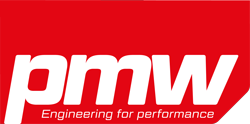Motorsport pushes every element of a vehicle beyond conventional limits. The heat radiating from compact engines, the unrelenting vibration across a chassis at speed, and the electromagnetic interference generated by increasingly complex electronics create an environment that can expose any weakness in an electrical system. Even the smallest failure in a wiring harness can undermine performance and leave teams facing setbacks measured in seconds yet costly in outcome. Glenn Piper, director of global product management at WireMasters, explores how aerospace-grade cabling technology helps motorsport engineers maintain performance and reliability
Race engineers operate in conditions that test cables far beyond ordinary parameters. Harnesses must maintain integrity against abrasion from debris, maintain conductivity under extremes of temperature and carry signals reliably during continuous vibration.
When a data line drops during a race, the loss of telemetry deprives teams of real-time insights that guide strategy and safety. When power distribution falters, the result can be immediate and visible on track. The challenge is not only to design wiring systems that resist these conditions but to do so while minimizing weight and preserving flexibility for intricate routing through tightly constrained assemblies.
Lessons from aerospace and defense
Many of the solutions now gaining traction in motorsport originated in aerospace programs, where reliability is crucial.
Conductors engineered with lighter alloys reduce weight without compromising electrical performance. High-temperature insulators such as fluoropolymers maintain stability even when exposed to sustained thermal loads. Shielding architectures designed to suppress electromagnetic interference protect signal integrity when multiple high-frequency systems operate in close proximity.
Specialist designs from manufacturers such as Gigaflight, including ethernet quad cables, are now approved and used for data transfer in Formula 1, where speed and reliability are decisive. These designs demonstrate how lessons learned in aviation and defense translate effectively to the track.
Data at speed
Modern racing vehicles depend on high-volume data flows that connect sensors, control systems and communications platforms. Telemetry provides teams with continuous insight into performance and wear, while video and voice systems support coordination across the pit wall.
The integrity of these channels rests on cable design that supports high-speed ethernet cabling while remaining resistant to vibration and interference. Specialist shielded twisted-pair data bus cables achieve the necessary transfer speeds while maintaining durability under stress. Coaxial designs deliver the signal stability required for video feeds that are scrutinized frame by frame.
From design to trackside
The effectiveness of advanced cabling relies not only on the technology itself but also on the ability to specify, source and integrate it when required. Motorsport engineers need assurance that materials tested to aerospace standards can be obtained with full traceability and incorporated into harnesses at the pace of development cycles measured in weeks rather than months. Through its partnership with Gigaflight, WireMasters provides motorsport engineers with ready access to approved aerospace-grade cabling when required.
Motorsport success depends on the flawless performance of systems in some of the harshest conditions electrical components will ever face. Aerospace-grade cabling, adapted for the track, offers the resilience and reliability that engineers demand. By applying these technologies and ensuring their availability, the industry continues to strengthen the unseen yet vital networks that keep vehicles competitive across every lap.
Explore: From invisible to accountable: measuring global road safety performance



